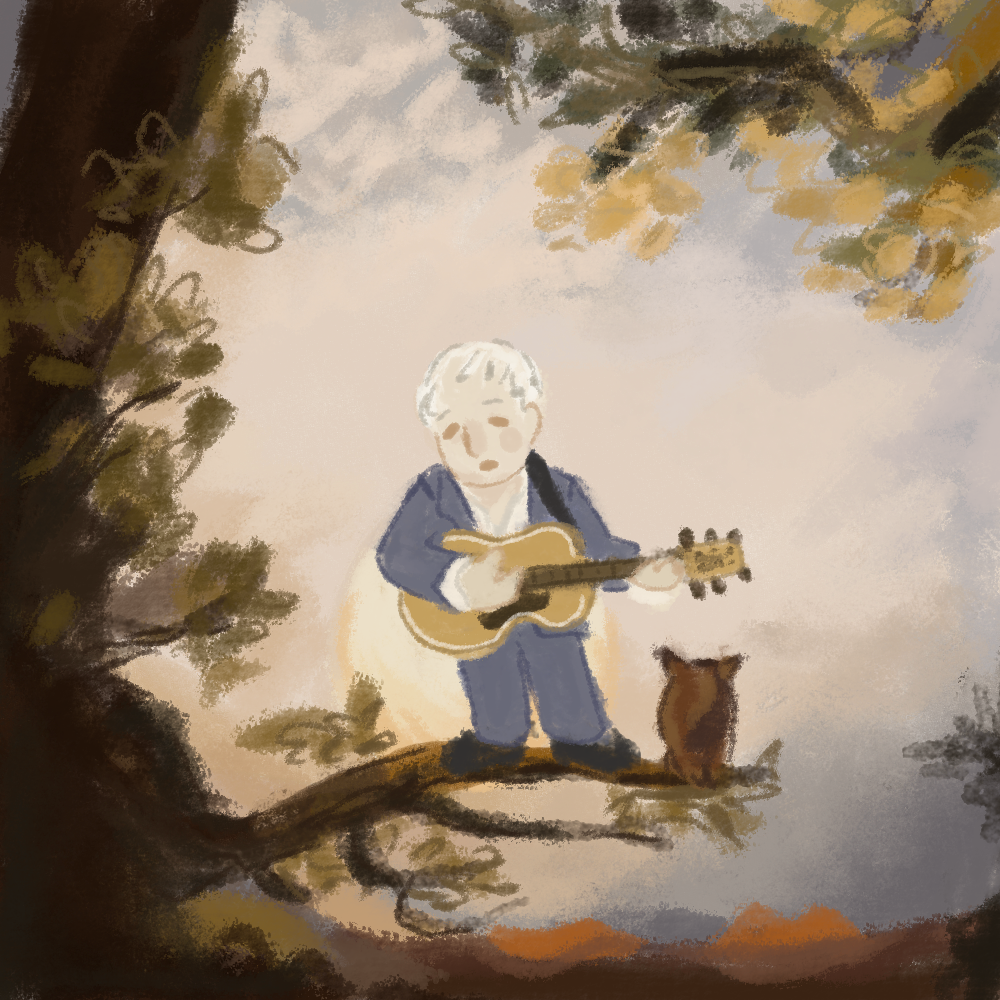It’s fitting that Mandy, the new film from hermetic and visionary director Panos Cosmatos, begins with the psychedelic prog rock melody of King Crimson’s “Starless,” from the 1974 album Red. Red is constant and overbearing throughout the film. The rugged protagonist (Nicolas Cage) is named Red and the film’s Pacific Northwestern setting often becomes a hell on earth, plagued by intense crimson lighting. Even the promotional poster for the film shows Cage’s face splashed in red, making the actor look like a cross between Carrie and Rambo. The image is as bold and absurd as the flick itself.
Mandy has heights of ultra-violence, but opens on a picturesque establishment of the halcyon romance between Red and the titular Mandy (Andrea Riseborough). An overly elaborate retro title card establishes the location and year as the Shadow Mountains, 1983. In a scene bearing ’80s horror roots on its sleeve, Mandy even mentions that their house is “right next to Crystal Lake,” in reference to Friday the 13th. In this nostalgic and slightly alien looking world, Red and Mandy share a peaceful existence. Red works as a lumberjack while Mandy paints and reads fantasy novels.
However, their blissful romance is soon overshadowed by a Manson-esque cult. The cult leader Jeremiah Sand (Linus Roache) first sees Mandy in a dreamlike encounter, quickly becoming obsessed and plotting her abduction. Roache gives a performance as captivating, pathetic and charismatic as is befitting only of cult leaders.
His character’s oddity plays well off of Andrea Riseborough, who subtly portrays Mandy’s fear and resolute bravery. Mandy’s hippy chic contrasts with Jeremiah’s absolute insanity in scenes that are simultaneously terrifying and hilarious.
Following a thrilling home invasion where the cult enlists the help of literal demon bikers, Mandy is taken from Red. Left battered and broken, Red must get revenge, and suddenly Mandy makes a major shift. It ramps up the violence to 11, becoming light on plot and high on revenge.
Despite the cults, horror references, aesthetic inspirations and occasional synth lost in the hypnotic soundtrack from the late Jóhan Jóhannsen, don’t mistake Mandy for just another replay of ’80s nostalgia popularized by It and Stranger Things. Mandy is its own beast, including influence from camp, pulp and grindhouse films of the 20th century while somehow injecting a sense of avant-garde surrealism. Mandy sports Mötley Crüe t-shirts and has an appetite for pulpy fantasy novels that appear elsewhere in the film’s visuals.
The Pacific Northwest is transformed into an otherworldly landscape where water and sky are never quite the right color. Shots linger on breathtaking images of deeply contrasting color, often highlighting an actor’s wild performance. Brief moments of animation evoke the album cover of a heavy metal band. Extensive sequences like these drag the plot to a slow, hypnotic pace. It somehow recalls slasher films while also reminiscing on the likes of David Lynch or Andrei Tarkovsky.
Writer and director Cosmatos’ boldness knows no bounds. He took a big risk by casting the infamous and always unpredictable Nicholas Cage for the starring role. Cage is subdued and beleaguered throughout much of Mandy, but when Cosmatos lets him loose, he takes the audience for a ride, leaving them unsure of whether to laugh or cry. With performances like this the film straddles the line between campy hilarity and genuine brilliance.
With all its confidence, style and beauty, Mandy is not perfect. At the halfway point, the film pivots dramatically, indulging in violence and schlock. Here the trance of Cosmatos’ hypnotic visuals is somewhat broken. Viewers might stop paying much attention to Mandy’s look and feel and begin to notice the lack of plot. The film’s unique combination of slasher and experimental genres is not always compatible. Occasionally, these two styles merely tolerate one another without harmonizing in a compelling way. Despite this, there’s really nothing quite like Mandy in theaters now. Repeatedly, moments of creative genius bombard the viewer with heavenly and hellish visuals. It’s unlikely that you’ll reach the end of this two-hour trip and not feel like you’ve gone somewhere entirely new.








Keith Dickens • Sep 11, 2019 at 9:00 am
Cool blog! Is your theme custom made or did you download it from somewhere? A design like yours with a few simple tweeks would really make my blog stand out. Please let me know where you got your theme. With thanks
Donna Wright • Sep 10, 2019 at 3:47 am
You have remarked very interesting details ! ps nice website .
Steven Pullman • Sep 5, 2019 at 8:37 pm
This site was… how do I say it? Relevant!! Finally I have found something that helped me. Cheers!